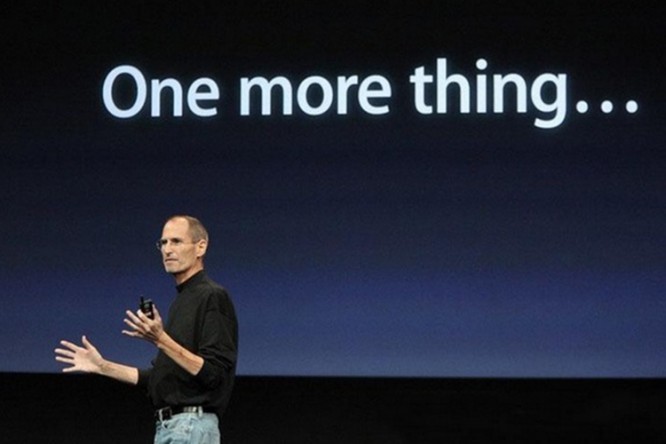How to become a designer: the main mistake and necessary skills
How to become a designer: the main mistake and necessary skills
The employees of @ Mail.ru, Badoo and Trood shared their professional experience: how to develop as a designer at the beginning of their career, how to avoid the main mistake and what is worth learning.
Bad design kills. Good makes life easier. Shiny – changes the world… Classical education will never keep up with the pace of industry development. It’s hard for beginners to jump on this train. But you can. Over the past two years, I have attended dozens of conferences, talked with designers from leading companies, worked on several projects and found similarities in the development of many specialists. Personal experience was added to the knowledge gained, and as a result, I got the material that I would have dreamed of reading three years ago.
The main mistake
The main mistake of novice designers is to forget what design is. The design is invisible.
It is difficult to describe it with a screenshot or insert it into a mockup. This is not a picture or a file. You only realize good design when you face bad design. Because design is the solution to a problem…
I didn’t understand this right away, because, like many, I was fond of the visual part, instead of completing the task, that is, solving the client’s problem and simplifying the user’s life.
Yuri Vetrov, head of the portal design team at Mail.Ru Group, supported this idea:
“The biggest mistake budding designers make is focusing on drawing screens instead of thinking about the big picture (business tasks, interaction scenarios, and user expectations).”
It is always good to listen to the customer’s ideas, but you can do things differently if it makes the product easier to use.
“People don’t know what they want until you show it to them.” – Steve Jobs.

I remember two days unsuccessfully shopping Zara, Reebok, Nike in search of simple but modern sneakers. Then I went to Lacoste for the first time and immediately found what I wanted. In such stores, things are simple, high-quality and their design does not change depending on the fashion. The appearance is evolving, but the design consistently solves one problem that I also faced – the search for simple, high-quality and stylish shoes.
The basic design principles are applicable to any industry. It is not so important what the trend is now. If you’ve solved the problem and your interface isn’t getting bored, you’ve done everything right.
Interestingly, when I asked what other mistakes beginners make, Yuri replied:
“Reckless use (or non-use) of patterns because they are always good for one task and bad for another.”
A similar thought was expressed by Pavel Shumakov, product designer at Badoo:
“Novice designers try to do everything right at once. But until you understand what you are doing, it makes no sense to think about a modular grid, icons. Try different options, remove all unnecessary, experiment. Better to start with chaos and put things in order than the other way around. “
How to avoid the main mistake?

A well-structured design process eliminates common mistakes and promotes insights, the significance of which is very great.
My design process, based on personal experience and a course from Tilda Publishing, looks like this:
– Study the task… I draw simple diagrams to illustrate the problem. I am trying to identify the main tasks and problems faced by the user. I am focusing on this and finalizing the scheme. Most often it is a mind map;
– Study… I browse collected collections on Pinterest, look for similar works on Dribbble, find sites of companies whose product is similar to the task. I think it can be applied to my task. By the end of the research, there are already several implementation options in my head. It remains to choose the right one;
– Decision… I like to sketch the interface on A4 sheets. I do 3 to 20. I start with a general vision of the interface, and then I see if it is convenient for the implementation of all functions.
– Layout… In Sketch, I will implement the selected interface. I’m taking a break. After I look with fresh eyes. Making changes. I think how you can do it differently. I do it. I compare. If necessary, go back to step 3;
– Feedback… Show work and make changes.
The main skills of an aspiring designer
Mastery of Photoshop or Sketch will not make a beginner a professional. And professionals should not forget about a few things that I have highlighted from communication, articles, courses and personal experience.
Development (continuous)… The designer knows how to solve the problem in many ways, because he has looked at hundreds of works. Design resources like Dribbble, Awwards, and design studio blogs will help you with this. Collect the works you like in the collection on Pinterest, sorting them by type (Mobile Profile, Media, etc.).
Process… Follow the algorithm. But also experiment. Everything can always be improved;
Tools… There are many of them now. Almost any of the ready-made mockups can assemble a prototype or make animation. Beginners don’t need to be sprayed. Learn Sketch or Photoshop first, and then move on to others;
Base… Colors. Typography. Grids. Need to know. At the start, at least superficially. Internet, articles, courses will help.
What to do right now
Practice is the best way to master a profession. At the start, it is important to build a portfolio, albeit from fictitious tasks. A well-thought-out decision, even if only one, will greatly help in promotion.
The following plan will help you take the first big step:
1. Set a task. Take an outdated site or come up with your own. Write down the task as if the client gave it to you;
2. Highlight the main elements. Decide what blocks will be on the site (menu, content, photos, etc.);
3. Find at least five sites with a similar structure. Think about which sites are structurally similar to yours. If your goal is to make a sports site, then you can take news as an example. If this is a landing page, then take a look at land-book.com;
4. Design one screen. Paper and pen are all you need. Sketch several options for the arrangement of the elements. You now have experience as you have viewed many similar sites. Choose one option that you think performs the main task better;
5. In Sketch or Photoshop, implement the drawing. Don’t get hung up on colors right away. Make it black and white first. Then add an accent color to the links and buttons. Pay attention to the size of elements, text, as well as line spacing. Poorly laid out text is striking;
6. Find a designer on Facebook and ask them to comment on your design. Listening to criticism is difficult, but rewarding. Paul says about this:
“Often the beginning designer is criticized by the same designers and often the usefulness of such comments is not very high. You need to learn how to filter what they say and write to you, otherwise you will never hear possibly small, important remarks from the whole mess. “
Conclusion
Is design a talent? I dont know. But I know for sure that if I had not looked through hundreds of works, read dozens of articles and completed several projects, I would not have been in the place of a product designer. If you intend to become a designer, be prepared that the first jobs will be terrible. Modify them. Look at the examples and think about why others did it and you didn’t. Correct. Practice again and someday you will look at your work and say, “This is cool.”
Thanks to Pavel Shumakov and Yuri Vetrov for comments. We will all benefit if the Russian-speaking design community develops. And it only depends on us.
Source: habrahabr.ru
…


